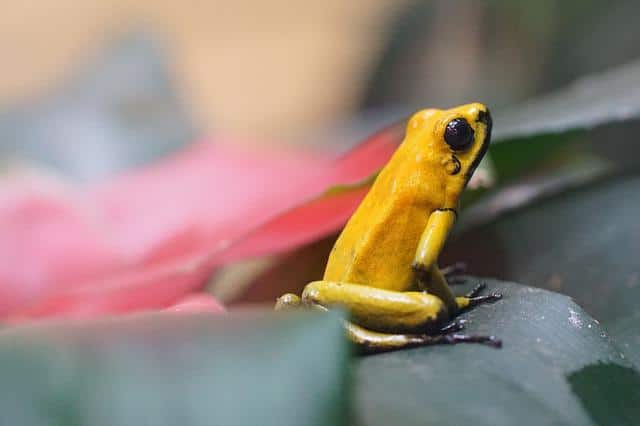
Panamanian golden frog – Panama national animal
The national animal of Panama is Panamanian golden frog which is found in Panama and Colombia. Its scientific name is Atelopus zeteki. The frog was adopted as a symbol in 1971 by the Panamanian government. The reason for this is because it is a unique species that only lives in Panama and Colombia, and its existence is threatened by human activity.
They are also found in the mountainous areas of Central America, including the highlands of Colombia, Ecuador and Panama and they live in very wet forests near streams or ponds with sandy bottoms.
Scientific Classification
Scientific Name: Atelopus zeteki
Family: Bufonidae
Species: A. zeteki
Class: Amphibia
Kingdom: Animalia
Physical Description
The reason why these frogs are so unique is because they have no teeth or tongue; they also have no ear drums or eardrums (although they do have a middle ear). This makes them unable to hear or make sounds like other animals do; however, they do communicate through vibrations which travel through water instead of air like other animals do. Their bodies are also very flexible because they are able to change directions quickly without any effort at all!
Habitats
The Panamanian golden frog lives in streams, rivers, and pools near the rainforest floor. It eats insects and other invertebrates. Its skin is highly toxic to predators, making it difficult for them to eat this frog without being poisoned themselves!
Facts about Panamanian Golden Frog
- Panamanian frog is the official national symbol & animal of Panama.
- It’s the only species of frog that has golden skin.
- Weight: The Panamanian golden frog weighs between 2.5 and 3.5 ounces, which is about as much as a human egg.
- Speed: The Panamanian golden frog can move at speeds up to 1 meter per second (approximately 2.2 miles per hour).
- Lifespan: The Panamanian golden frog has a lifespan of 5-10 years, which is relatively short compared to other amphibians.
- The Panamanian golden frog has no teeth, but its sticky tongue is coated in mucus that helps it grab things like flies and ants from the ground.
- It eats ants, termites, and beetles, which it finds by digging through soil with its hands and tongue.
- Their eyes are completely black with no white at all around them (this helps them see better in dark environments).
- They lay eggs in shallow pools of water where tadpoles can hatch safely without being eaten by other predators including other frogs!
- There are only about 1,000 Panamanian golden frogs left in the wild today, most of them living in captivity at zoos around the world.
- The Panamanian golden frog has been around for millions of years—but we’re losing them fast due to habitat destruction, pollution, and climate change. If we don’t act now, this incredible species will disappear forever!
Why is Panamanian Golden Frog the national animal of Panama?
The Panamanian golden frog was named as the nation animal of Panama by President Juan Carlos Varela after research showed that it was one of the most endangered species on earth.
The Panamanian golden frog is one of the most endangered species in the world. It has a skin that is bright yellow, with black spots on its back and legs. The Panamanian golden frog is endemic to Panama, but it can also be found in the surrounding countries of Colombia, Costa Rica and Nicaragua. So, due to all these facts it was officially declared as native animal of panama.
